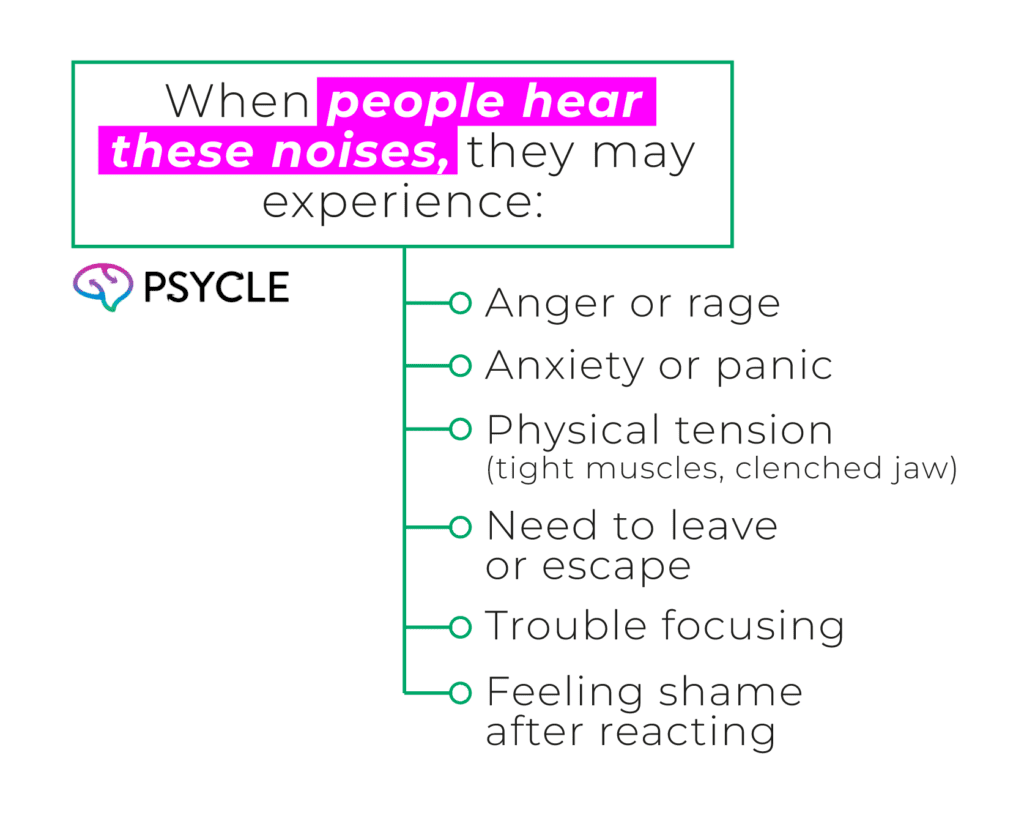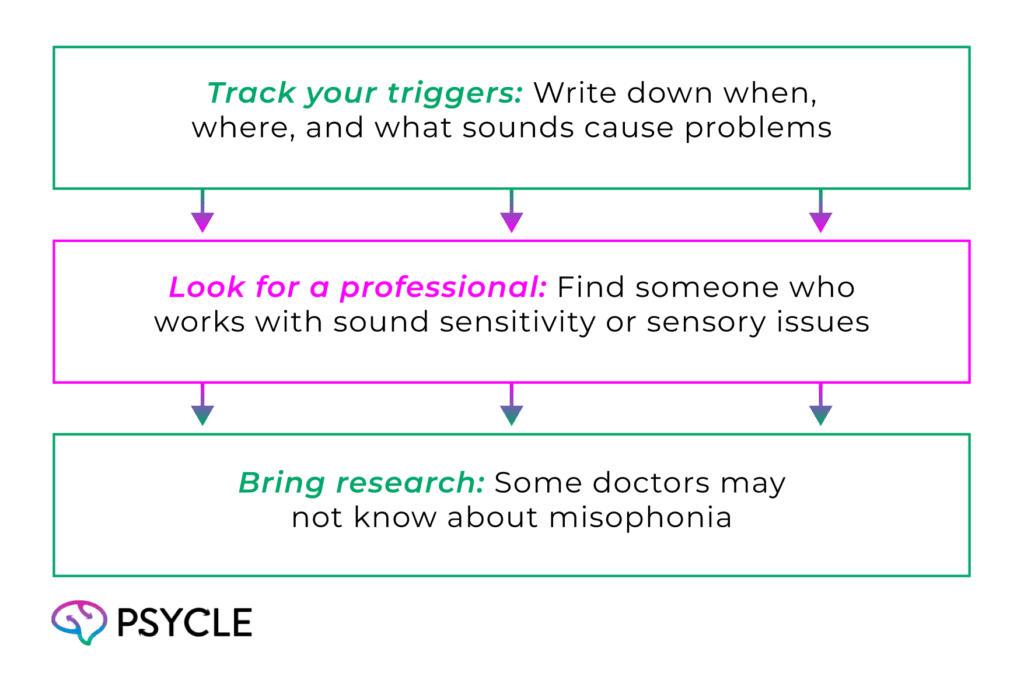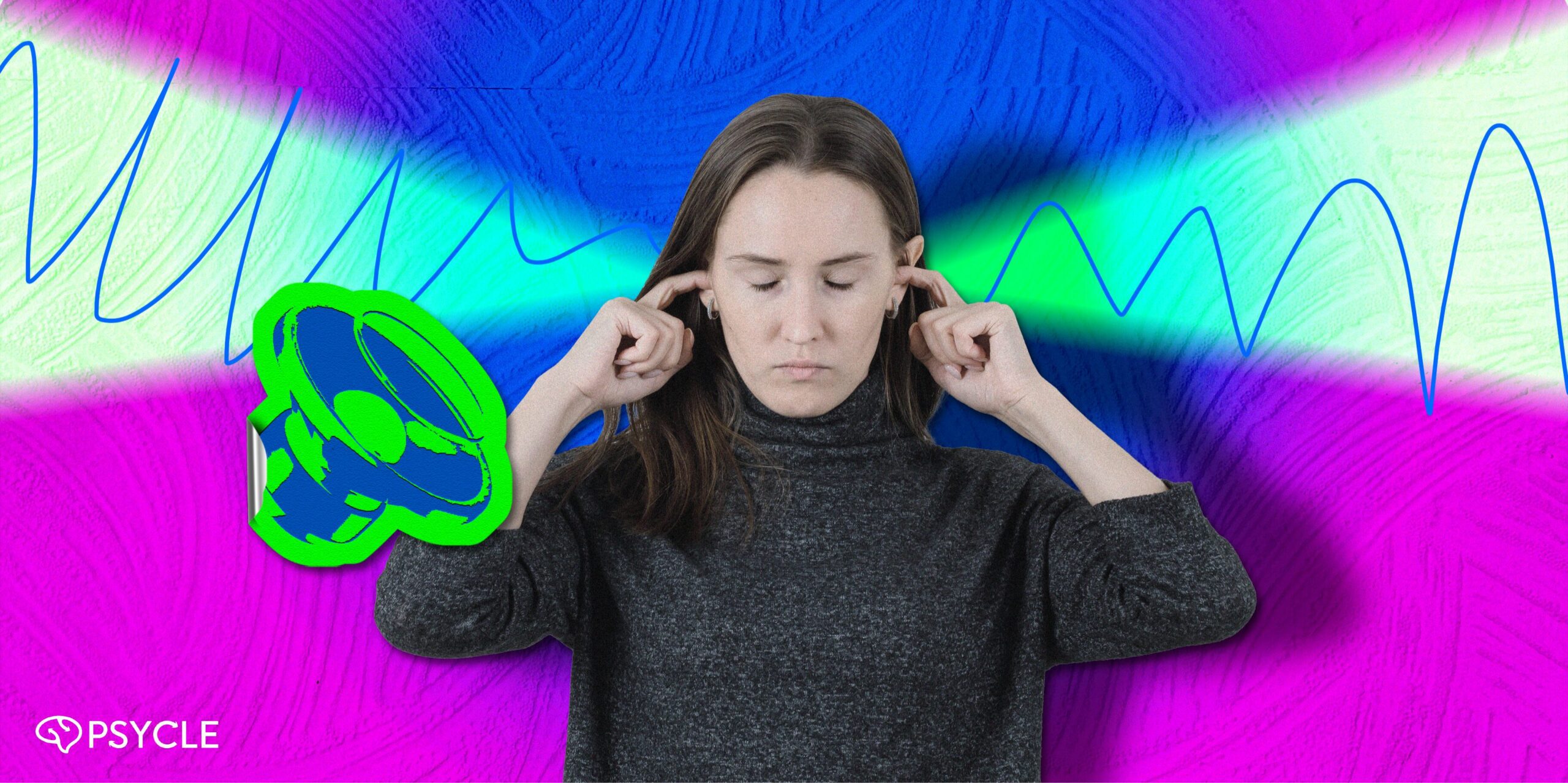Misophonia can mean sudden rage, anxiety, or panic from hearing simple everyday noises. Is this just a strong dislike of certain noises, or is it an actual mental health condition?
This article explores the science behind misophonia, its impact on daily life, and the ongoing debate over whether it qualifies as a diagnosable mental disorder.
Key Takeaways
- Misophonia is a strong negative reaction to specific sounds, often triggering anger, anxiety, or disgust.
- It’s not currently classified as a mental disorder, but many researchers believe it should be due to its severe impact and similarities to other conditions.
- Common triggers include chewing, tapping, breathing, and other repetitive everyday noises.
- Misophonia often starts in childhood or adolescence and may have genetic or neurological roots.
- It frequently coexists with other mental health conditions, like anxiety, ADHD, or depression.
- There is no cure, but therapies like CBT and sound exposure therapy can help people manage symptoms.
What is Misophonia?
Misophonia is characterized by a strong physical and emotional response to certain sounds. These sounds can make people feel angry, anxious, or disgusted. Some people feel panic or rage, whereas others may cry or feel trapped.
Researchers Pawl and Margaret Jastreboff first introduced the concept of misophonia in the early 2000s. They found that sound-sensitive people were generally not bothered by all noises, but rather by specific sound patterns linked to certain situations or environments.
This phenomenon was called misophonia, with the name derived from the Greek words miso (hate) and phonia (sound).
Misophonia Prevalence and Burden
While misophonia isn’t well-known, research suggests it could be relatively common. A UK study found nearly one in five people experience misophonia to a level where it causes significant distress.
The condition can significantly affect someone’s everyday life. Sound triggers–such as people chewing–can cause people to avoid social occasions, leading to isolation and loneliness. Triggers can also affect people’s ability to focus, impairing their work and school performance. People may have ongoing stress and anxiety as they worry about hearing triggers and how they might react.
Common Misophonia Symptoms and Trigger Sounds
Misophonia triggers are usually everyday noises that don’t bother others. Common triggers include:
- Chewing
- Lip smacking
- Sniffling
- Tapping
- Footsteps
- Breathing
- Pen clicking
- Typing or keyboard noise
While less common, some people also react to visual triggers. These can include things like leg shaking or repetitive movements.

Is Misophonia Classified as a Mental Health Disorder?
Misophonia isn’t currently listed as a mental disorder in major diagnostic manuals like the DSM-5 or ICD-10. However, many researchers believe it should be.
Some experts argue that misophonia fits within the group of conditions related to obsessive-compulsive disorder (OCD). These disorders often involve intrusive thoughts or urges and repetitive behaviors meant to reduce distress or discomfort.
A scientific review stated that misophonia meets “many of the criteria for a mental disorder.” However, the authors said the exact nature of the condition remains unclear, making it tricky to classify. In some people, misophonia appears to exist on its own, whereas in others, it seems to be part of a larger sensitivity to sound or other sensations.
Moreover, misophonia often appears with other mental conditions and so may be seen as a symptom, rather than a disease on its own. Common comorbidities include:
- Anxiety disorders
- Major depressive disorder (MDD)
- Attention-deficit/hyperactivity disorder (ADHD)
- Posttraumatic stress disorder (PTSD)
While not clinically recognized, advocacy groups are pushing for greater acknowledgement and understanding of misophonia. Groups like the Misophonia Research Fund and Misophonia Association support awareness and research.
What Causes Misophonia? Theories and Brain Science
Scientists do not know the exact cause of misophonia. But research gives some ideas.
Experiments have shown that certain brain areas may be more active in people with misophonia. This includes the:
- Left auditory cortex – where sound is processed
- Bilateral hippocampus – where personal memories are formed and stored
- Right anterior insula – involved in feelings of disgust
- Amygdala – a brain region involved in emotional processing and stress.
Studies also suggest misophonia could be linked to heightened brain connectivity between the amygdala, hippocampus, and the default mode network (DMN), which gives someone a sense of self. This increased connectivity could make it harder for the brain to separate current sound from past experiences or emotional memories.
Misophonia usually starts during childhood or adolescence. This pattern suggests it may relate to how the brain grows and changes over time. Some people also have a family history of sound sensitivity, meaning genetics could play a role.
How to Treat Misophonia: Coping Strategies and Therapies
There is no single cure for misophonia. But many people find ways to manage it.
Some doctors use cognitive behavioral therapy (CBT), which aims to change how people think and respond to triggers. It helps people identify triggers and develop coping strategies to avoid emotional overwhelm and impulsive reactions.
Other approaches include sound exposure therapy. This works by slowly and carefully exposing the person to the trigger sounds in a safe and controlled way. At first, the sounds are played for a short time and at a low volume. Then, little by little, the length and loudness of the sound are increased. Over time, this helps the brain get used to the sounds and react to them less intensely.
Lifestyle changes can help too. These include:
- Wearing noise-canceling headphones
- Playing background music in noisy places
- Telling close friends or family about your needs
- Planning ahead for crowded or loud settings
- Creating a quiet space at home or school
Seeking Help for Misophonia
If you or someone you know reacts strongly to certain sounds, talk to a doctor or therapist.
Here are steps you can take:

You can also find support in online groups and forums such as:
Other people with misophonia often share tips, tools, and stories. Talking with others may help you feel less alone.
FAQs
What’s the Relationship Between Misophonia and Autism?
People with autism spectrum disorder (ASD) are often highly sensitive to sensory input, including sound. Misophonia may occur more frequently in autistic individuals due to this heightened sensory processing. While not exclusive to autism, misophonia can be one of several sensory challenges autistic people face, making daily environments overwhelming or distressing.
Is it Possible to Have Only One Trigger?
Yes. Some people with misophonia have a single, specific trigger that causes intense reactions. For others, the number of triggers may grow over time.

